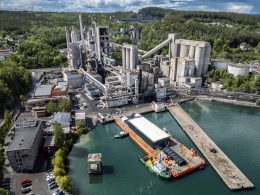New research by DNV shows that member states of the Association of South East Asian Nations (ASEAN) may be able to cut down their decarbonization costs by $800 billion if they pursue regional collaboration for projects involving power interconnectors, hydrogen networks, and energy storage infrastructure.
In its white paper titled ‘ASEAN Interconnector Study: Taking a Regional Approach to Decarbonization,’ DNV evaluates the advantages of a unified regional strategy towards decarbonizing the power sector and addressing hurdles such as efficiently integrating the substantial influx of renewable energy. It estimates the costs of individual ASEAN member states decarbonising with moderate cross-border power interconnection or full regional cooperation involving interconnectors, hydrogen networks, and energy storage.
All ASEAN member states aim to achieve net-zero carbon emissions by 2050, with a long-term vision of establishing an ASEAN power grid to meet the region’s growing energy needs and enhance energy security. DNV believes that such a grid could support decarbonisation efforts by transporting clean energy from countries with surplus renewable power to those with deficits, as most current emission reduction efforts remain confined to individual nations.
Keeping this in view DNV presents three scenarios for a decarbonized ASEAN power sector by 2050. In the ‘individual approach’ scenario, countries attempt to decarbonize using their resources. In contrast, the ‘moderate interconnection’ pathway features several cross-border power interconnectors with limited transmission capacity and no hydrogen network. The third scenario, dubbed ‘regional cooperation,’ envisions full, unrestricted resource-sharing between countries, involving power interconnectors and hydrogen networks.
The DNV study highlights that the third scenario minimizes the necessary levels of renewable generation and energy storage to achieve net zero, due to enhanced resource utilisation and sharing from regions rich in renewable potential. This collaborative approach can yield substantial cost savings, optimize material resource utilization, and reduce the land footprint required for renewable energy development.
Brice Le Gallo, Vice President and Regional Director APAC, Energy Systems at DNV, said, “Our study forecasts power flow between ASEAN countries and regions under different scenarios. A key finding is that moderate interconnection offers substantial cost savings and requires limited interconnectors, meaning less resources and investment. This can be seen as a moderate step towards decarbonization as key stakeholders recognize the benefits of cross-border interconnectors.”





















